Nel mondo in continua evoluzione della bellezza e della cura della persona, lo shampoo secco è emerso come un prodotto rivoluzionario, offrendo una soluzione comoda per mantenere la freschezza dei capelli senza bisogno di acqua. Mentre entriamo nel 2025, la domanda di shampoo secco continua a salire, spinta da stili di vita in evoluzione, preoccupazioni ambientali e formulazioni di prodotti innovative. Questa guida approfondisce l'essenza dello shampoo secco, il suo potenziale di mercato e le tendenze che ne plasmano il futuro.
Sommario:
– Capire lo shampoo secco e il suo potenziale di mercato
– Esplorazione dei tipi più diffusi di shampoo secco
– Affrontare i punti critici comuni dei consumatori
– Innovazioni e nuovi prodotti nello shampoo secco
– Considerazioni finali sull’approvvigionamento di shampoo secco per il 2025
Capire lo shampoo secco e il suo potenziale di mercato
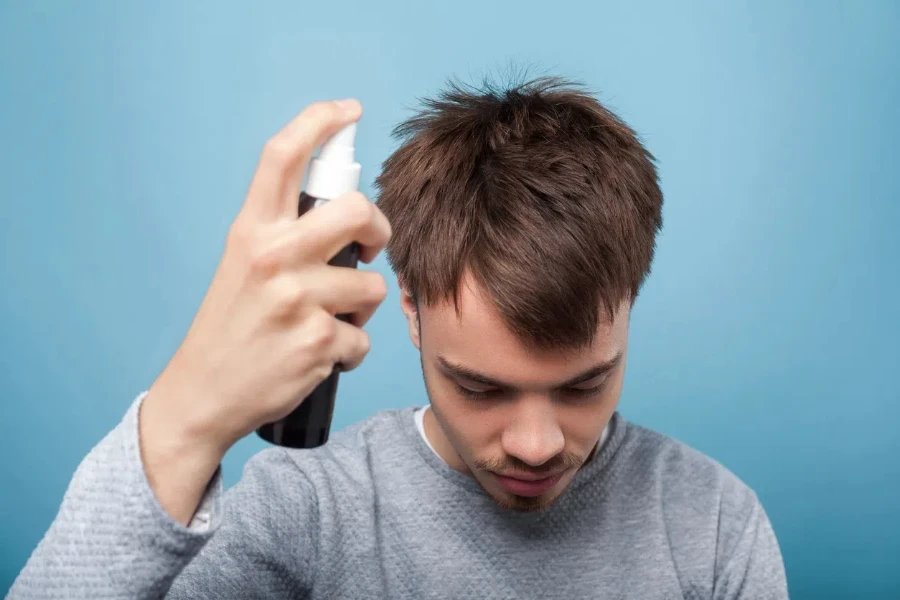
Cos'è lo shampoo secco? Una rapida panoramica
Lo shampoo secco è un prodotto per la cura dei capelli senza acqua, studiato per assorbire l'eccesso di sebo, rinfrescare i capelli e aggiungere volume senza la necessità di un lavaggio tradizionale. Disponibile in varie forme, come spray, polveri e schiume, lo shampoo secco è diventato un punto fermo nelle routine di bellezza di molti. La sua capacità di fornire una soluzione rapida per i capelli grassi lo rende un prodotto indispensabile per le persone con programmi fitti, i viaggiatori frequenti e coloro che vivono in regioni con scarsità d'acqua.
Tendenze e hashtag dei social media che guidano la domanda
L'ascesa dei social media ha influenzato significativamente il comportamento dei consumatori, con piattaforme come Instagram e TikTok che hanno svolto un ruolo fondamentale nella diffusione dello shampoo secco. Hashtag come #DryShampooHacks, #WaterlessBeauty e #EcoFriendlyHairCare hanno ottenuto milioni di visualizzazioni, mostrando modi creativi per usare lo shampoo secco e sottolineandone i benefici. Influencer e appassionati di bellezza condividono spesso le loro esperienze e i loro consigli, aumentando ulteriormente la popolarità del prodotto. Questo passaparola sui social media non solo aumenta la consapevolezza dei consumatori, ma incoraggia anche i marchi a innovare e soddisfare la crescente domanda.
Allineamento con le tendenze più ampie della bellezza e della cura della persona
Il mercato dello shampoo secco si allinea perfettamente con diverse tendenze più ampie nel settore della bellezza e della cura della persona. Una tendenza significativa è lo spostamento verso prodotti naturali e biologici. I consumatori cercano sempre più soluzioni per la cura dei capelli prive di sostanze chimiche aggressive e gli shampoo secchi formulati con ingredienti naturali stanno guadagnando terreno. Secondo un rapporto professionale, si prevede che la domanda di shampoo secchi naturali e biologici aumenterà in modo significativo, spinta dalla consapevolezza dei consumatori dei potenziali rischi per la salute associati alle sostanze chimiche sintetiche.
Un'altra tendenza è la crescente enfasi sulla sostenibilità. La natura senza acqua dello shampoo secco lo rende un'alternativa ecologica al tradizionale lavaggio dei capelli, allineandosi al movimento globale verso la conservazione dell'acqua. I marchi si stanno anche concentrando su imballaggi sostenibili, utilizzando materiali riciclati e riducendo la loro impronta di carbonio per attrarre consumatori attenti all'ambiente.
Il fattore praticità non può essere trascurato. Nel mondo frenetico di oggi, le soluzioni di bellezza che fanno risparmiare tempo sono molto apprezzate. Lo shampoo secco offre un modo rapido e semplice per mantenere l'igiene e lo stile dei capelli, soddisfacendo le esigenze di professionisti, studenti e genitori indaffarati. Questa praticità, unita all'efficacia del prodotto, è un fattore chiave della sua crescita di mercato.
In conclusione, lo shampoo secco è più di un semplice prodotto di bellezza; è un riflesso delle preferenze dei consumatori in evoluzione e dei cambiamenti nello stile di vita. Mentre il mercato continua a espandersi, guidato dalle tendenze dei social media, dalla domanda di prodotti naturali e sostenibili e dall'esigenza di praticità, lo shampoo secco è destinato a rimanere un attore significativo nel settore della bellezza e della cura della persona.
Esplorazione dei tipi più diffusi di shampoo secco
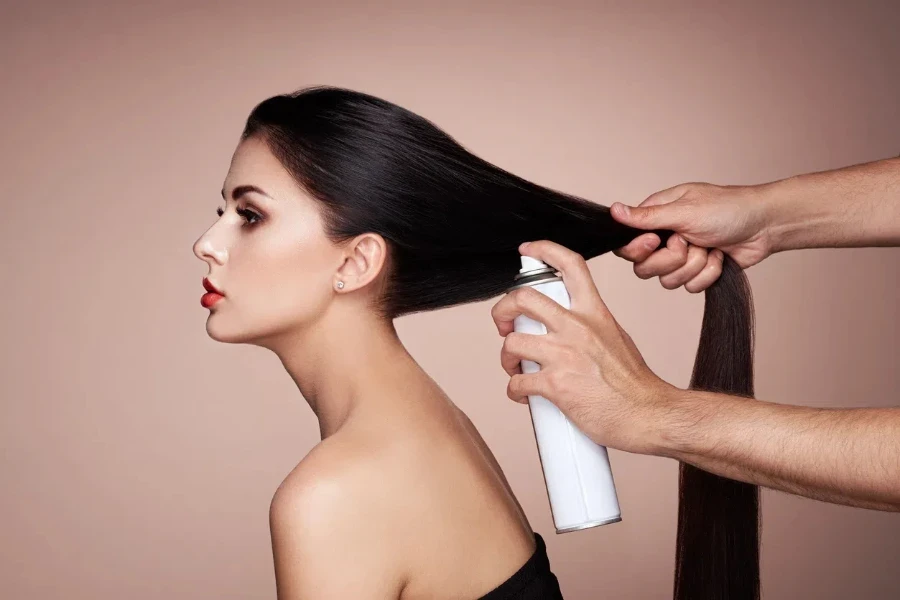
Aerosol vs. polvere: pro e contro
Quando si tratta di shampoo secco, la scelta tra spray e polvere è fondamentale per gli acquirenti aziendali. Gli shampoo secchi spray sono preferiti per la loro facilità di applicazione e distribuzione uniforme. Sono particolarmente efficaci per ritocchi rapidi e sono comodi per l'uso in movimento. Tuttavia, gli spray contengono spesso propellenti e altre sostanze chimiche che potrebbero non essere in linea con la crescente domanda dei consumatori di prodotti naturali ed ecocompatibili. D'altro canto, gli shampoo secchi in polvere, che in genere sono disponibili in flaconi shaker o in polvere sciolta, offrono un'alternativa più naturale. Sono spesso formulati con ingredienti come amido di riso o argilla, che assorbono efficacemente l'olio senza la necessità di additivi sintetici. Lo svantaggio è che le polveri possono essere più disordinate da applicare e potrebbero richiedere più sforzo per fondersi nei capelli, specialmente per i colori di capelli più scuri.
Analisi degli ingredienti: naturali vs. sintetici
Il dibattito tra ingredienti naturali e sintetici negli shampoo secchi è una considerazione significativa per gli acquirenti aziendali. Gli shampoo secchi naturali spesso contengono ingredienti come polvere di radice di maranta, argilla caolino e oli essenziali. Questi ingredienti non sono solo efficaci nell'assorbire l'olio, ma soddisfano anche la crescente preferenza dei consumatori per prodotti di bellezza puliti. Ad esempio, lo shampoo secco Airwash di K18 utilizza microalghe mediterranee derivate dalla biotecnologia per bilanciare la salute del cuoio capelluto e controllare la produzione di sebo in eccesso. Gli shampoo secchi sintetici, sebbene a volte più efficaci nel fornire risultati immediati, possono contenere ingredienti come butano, isobutano e propano, che non sono solo aggressivi per capelli e cuoio capelluto, ma sollevano anche preoccupazioni ambientali. Gli acquirenti aziendali devono soppesare i vantaggi dell'efficacia immediata rispetto agli impatti a lungo termine sulla salute e sull'ambiente quando selezionano i prodotti per il loro inventario.
Feedback dei consumatori: cosa dicono gli acquirenti
Per gli acquirenti aziendali è fondamentale comprendere il feedback dei consumatori quando si acquistano shampoo secchi. Secondo un rapporto professionale, le vendite di shampoo secchi negli Stati Uniti hanno registrato un aumento del 7.3% anno su anno dal 2021 al 2022, il che indica una crescente domanda di mercato. I consumatori apprezzano i prodotti che offrono multifunzionalità, come quelli che forniscono benefici per lo styling oltre all'assorbimento dell'olio. Ad esempio, prodotti come Airwash Dry Shampoo di K18, che promuove anche la salute del cuoio capelluto, sono molto apprezzati. Tuttavia, i reclami comuni includono problemi con residui e accumuli, in particolare con i prodotti spray. I consumatori con capelli più scuri segnalano spesso residui bianchi visibili, che possono essere un deterrente significativo. Affrontare queste preoccupazioni attraverso la formulazione del prodotto e chiare istruzioni per l'uso può aumentare la soddisfazione e la fedeltà dei consumatori.
Affrontare i problemi comuni dei consumatori
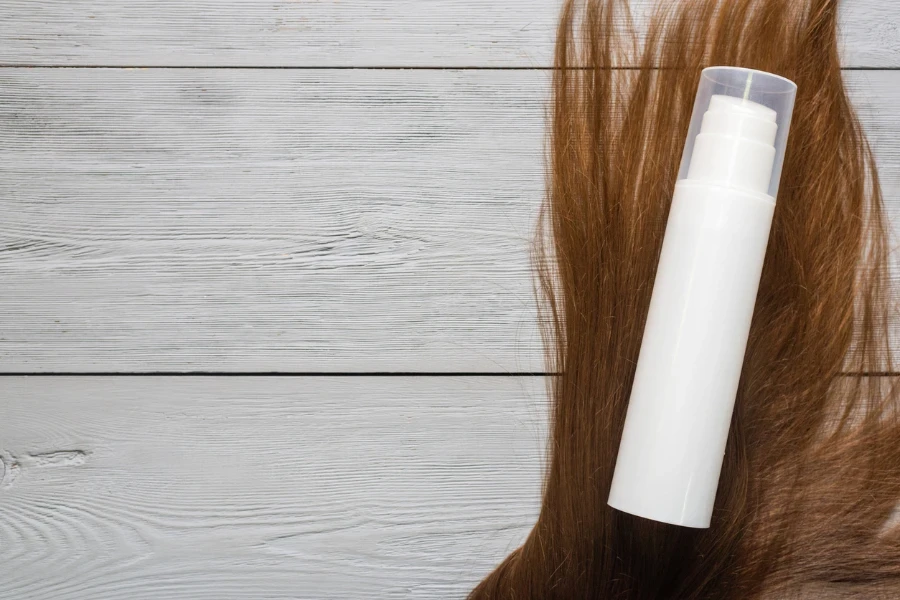
Affrontare i problemi di residui e accumuli
Residui e accumuli sono comuni punti dolenti per gli utilizzatori di shampoo secco. Gli acquirenti aziendali dovrebbero dare priorità ai prodotti che offrono soluzioni chiare a questi problemi. Le formulazioni che utilizzano polveri più fini, come amido di riso o silice, possono ridurre al minimo i residui visibili. Inoltre, i prodotti che includono ingredienti come il carbone attivo possono aiutare ad assorbire l'olio senza lasciare un accumulo pesante. Marchi come Batiste hanno introdotto shampoo secchi colorati per soddisfare i consumatori con capelli più scuri, riducendo la visibilità dei residui. Garantire che i prodotti siano dotati di chiare istruzioni per l'applicazione può anche aiutare ad attenuare questi problemi, guidando i consumatori su come applicare il prodotto in modo efficace senza abusarne.
Soluzioni per diversi tipi e colori di capelli
Diversi tipi e colori di capelli richiedono soluzioni di shampoo secco su misura. Ad esempio, le persone con capelli fini possono trarre beneficio dagli shampoo secchi volumizzanti che aggiungono corpo senza appesantire i capelli. Prodotti come lo shampoo secco Perfect Hair Day di Living Proof sono progettati per pulire i capelli aggiungendo volume, rendendoli ideali per capelli fini. Per capelli ricci o strutturati, la ritenzione dell'idratazione è fondamentale. Gli shampoo secchi che includono ingredienti idratanti come l'aloe vera o l'olio di cocco possono aiutare a mantenere l'equilibrio naturale dell'idratazione dei capelli. Inoltre, gli shampoo secchi specifici per colore, come quelli offerti da marchi come Bumble and Bumble, soddisfano le esigenze uniche di diversi colori di capelli, assicurando che il prodotto si fonda perfettamente e valorizzi la tonalità naturale dei capelli.
Garantire la salute e l'igiene del cuoio capelluto
La salute del cuoio capelluto è un aspetto fondamentale della cura generale dei capelli e gli shampoo secchi svolgono un ruolo nel mantenerla. I prodotti che includono ingredienti come l'olio di melaleuca o l'acido salicilico possono aiutare a mantenere il cuoio capelluto pulito e privo di forfora. Ad esempio, lo shampoo secco con latte d'avena di Klorane è formulato per essere delicato sul cuoio capelluto e assorbire efficacemente l'olio. Gli acquirenti aziendali dovrebbero cercare prodotti che bilancino l'assorbimento dell'olio con il nutrimento del cuoio capelluto, assicurandosi che un uso frequente non porti a irritazione o secchezza del cuoio capelluto. Inoltre, educare i consumatori sull'importanza di un lavaggio regolare a umido per integrare l'uso dello shampoo secco può aiutare a mantenere l'igiene del cuoio capelluto.
Innovazioni e nuovi prodotti nello shampoo secco
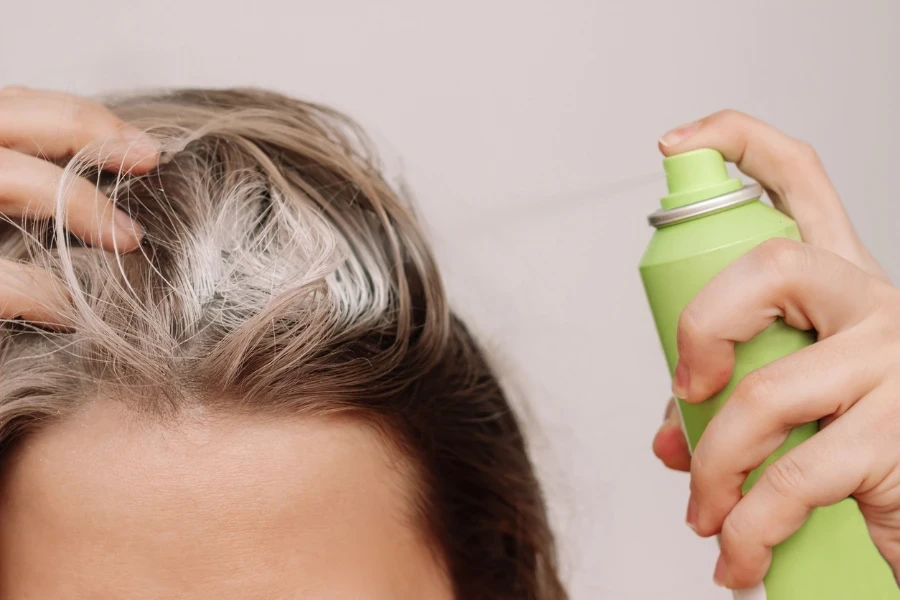
Ingredienti e formulazioni emergenti
Il mercato dello shampoo secco sta assistendo a un'ondata di ingredienti e formulazioni innovative. I marchi stanno incorporando sempre più ingredienti naturali e sostenibili per soddisfare la domanda dei consumatori di prodotti eco-compatibili. Ad esempio, l'uso di microalghe mediterranee nello shampoo secco Airwash di K18 evidenzia la tendenza verso ingredienti derivati dalla biotecnologia che promuovono la salute del cuoio capelluto. Inoltre, stanno emergendo formulazioni che includono probiotici e prebiotici, volte a bilanciare il microbioma del cuoio capelluto e migliorare la salute generale dei capelli. Queste innovazioni non solo soddisfano i consumatori attenti alla salute, ma posizionano anche i marchi come leader nella bellezza sostenibile.
Opzioni ecologiche e sostenibili
La sostenibilità è una tendenza significativa nel settore della bellezza e gli shampoo secchi non fanno eccezione. I marchi si stanno allontanando dal packaging aerosol ed esplorando alternative come spray a pompa e formati in polvere. Ad esempio, Faba TONIQ della Upcycled Beauty Company utilizza ingredienti riciclati dalla produzione di hummus, allineandosi al movimento zero-waste. Anche le innovazioni nel packaging, come i contenitori biodegradabili e le opzioni ricaricabili, stanno guadagnando terreno. Gli acquirenti aziendali dovrebbero prendere in considerazione queste opzioni ecologiche per attrarre consumatori attenti all'ambiente e ridurre la loro impronta di carbonio.
Progressi tecnologici nei metodi applicativi
I progressi tecnologici stanno rivoluzionando i metodi di applicazione degli shampoo secchi. Sono all'orizzonte shampoo secchi intelligenti che monitorano le condizioni del cuoio capelluto e forniscono feedback in tempo reale. Questi prodotti utilizzano sensori e algoritmi AI per analizzare la salute del cuoio capelluto e consigliare un utilizzo personalizzato. Inoltre, i progressi nella stampa 3D stanno consentendo la creazione di shampoo secchi personalizzati su misura per i singoli tipi di capelli e le loro esigenze. Queste innovazioni non solo migliorano l'esperienza utente, ma offrono anche un vantaggio competitivo in un mercato affollato.
Considerazioni finali sull'approvvigionamento di shampoo secco per il 2025

In conclusione, il mercato dello shampoo secco si sta evolvendo rapidamente, spinto dalla domanda dei consumatori di praticità, sostenibilità e multifunzionalità. Gli acquirenti aziendali devono rimanere al passo con queste tendenze e dare priorità ai prodotti che affrontano i punti deboli comuni dei consumatori, offrono formulazioni innovative e sono in linea con i valori ambientali. In questo modo, possono garantire una gamma di prodotti diversificata e accattivante che soddisfa le esigenze dei consumatori moderni.
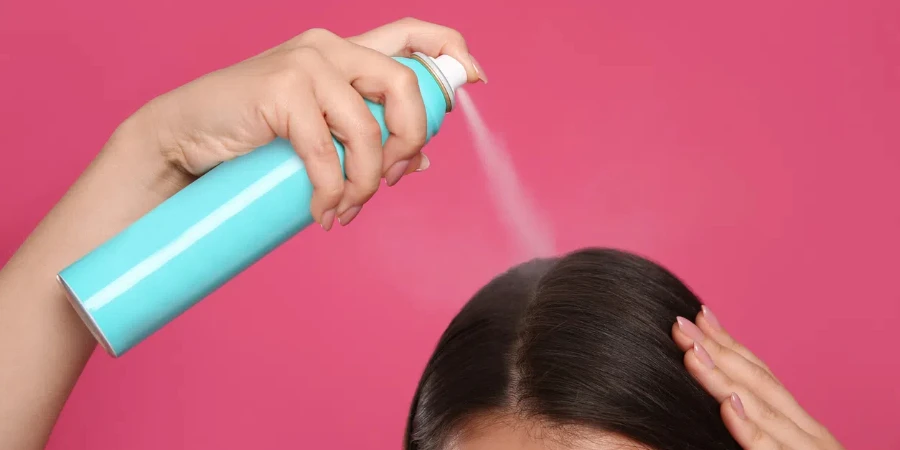




 বাংলা
বাংলা Nederlands
Nederlands English
English Français
Français Deutsch
Deutsch हिन्दी
हिन्दी Bahasa Indonesia
Bahasa Indonesia Italiano
Italiano 日本語
日本語 한국어
한국어 Bahasa Melayu
Bahasa Melayu മലയാളം
മലയാളം پښتو
پښتو فارسی
فارسی Polski
Polski Português
Português Русский
Русский Español
Español Kiswahili
Kiswahili ไทย
ไทย Türkçe
Türkçe اردو
اردو Tiếng Việt
Tiếng Việt isiXhosa
isiXhosa Zulu
Zulu